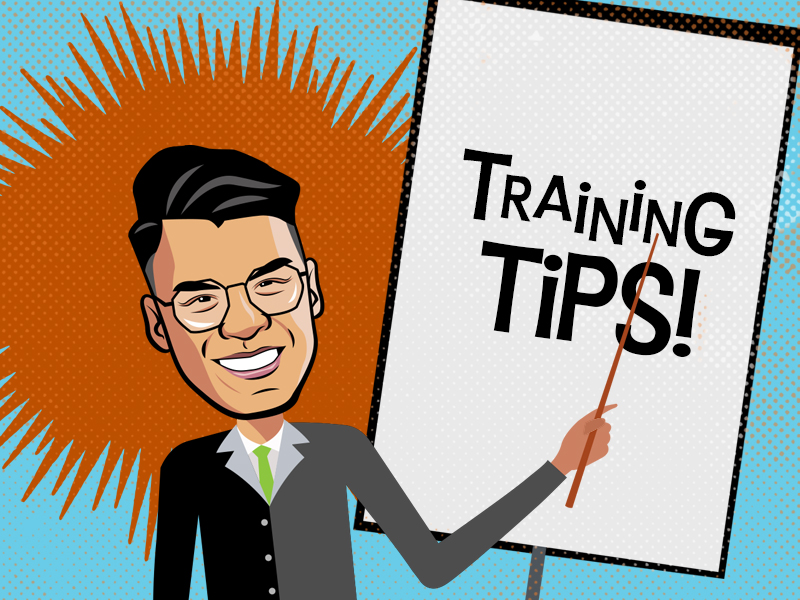
Try These Effective Training Tips for Your Next Meeting
When we started building training programs, we had a limited training tips to work from. However, after connecting with great mentors, going through various training programs, and learning through trial and error, we have accumulated tools to run effective training session. We have conducted all types of training, including in-person, virtual, and hybrid, for advocacy groups and campaigns of all sizes. Over time, we have continuously experimented with new tactics to create the most effective learning environment for our participants.
Being an effective trainer requires practice, flexibility, and an understanding of your audience's goals and needs. Every group is different, and each training session has its own purpose. By combining your knowledge of the training program's goals, your understanding of the audience, and an assortment of tools, tactics, and tricks, you can ensure that you connect with your participants and deliver the best training experience.
Yes, there is a lot to think about when planning and executing a training. Whether you are involved in advocacy, politics, or any other field, there is much to consider when planning and executing a training session. Our training tips can help you regardless of your specific domain. Here are our top training tips for your next session:
Define clear learning goals - Establish specific learning outcomes you want to achieve during the training session. Clear objectives help participants understand what they can expect to learn. Ensure buy-in from the organization and the audience and be open to adjusting goals as needed.
Know your audience - Understand the background, skill level, and expectations of the participants. Using pre-training surveys or mini surveys within training to stay on track.
Speak to multiple audiences - Adapt your training approach and content to the audience’s needs and ensure engagement. Provide easy, medium, and expert versions of your notes to cater to varying levels of expertise.
Create a community agreement - Foster collaboration and respect among participants by starting with core ground rules created as a community. Encourage participants to share their goals for each session.
Create an inclusive and positive learning environment - Foster an atmosphere where participants feel comfortable sharing ideas, asking questions, and participating actively. Your approach as a trainer plays a significant role in creating this environment.
Be accessible - Font choices, color choices in slide, visual representations, captioning, simultaneous translations etc. There are many ways you can make your training more accessible, continue refining and adapting your training to reach as inclusive an audience as possible.
Keep intros short - Introduce yourself and your team briefly, integrating the introductions into the curriculum whenever possible.
Layer learning - Employ various training techniques such as presentations, group discussions, case studies, role-playing, and hands-on activities to accommodate different learning styles. Aim for active engagement and enjoyable presentations.
Break content into manageable chunks - Present information in smaller, digestible segments. Use visual aids, storytelling, and real-life examples to make complex concepts more accessible and memorable.
Encourage participation and interaction - Engage participants through open-ended questions, group exercises, and discussions. Motivate them to share their experiences and perspectives, fostering a collaborative learning environment.
Provide constructive feedback - Offer timely and specific feedback to reinforce participants' learning and guide their improvement. Focus on both strengths and areas for growth.
Use simulations - Relate the training content to practical scenarios and real-world applications. A simulation is like a case study that you get to try on, like a pair of pants. It takes trainees on a journey to learn new things and ways of work styles.
Custom exercises - Create exercises that promote group work and engagement tailored to the goals of the training. Custom exercises offer unique opportunities for participants to think critically and apply their knowledge.
Role play - Integrate role-playing activities to bring subjects to life and demonstrate the relevance of the training material to participants' work or daily lives.
Avoid reading slides - Great visuals and concise information make for efficient slides. While some may require more detail, avoid excessive text-based slides to keep presentations engaging.
Pay attention to the schedule - Crafting a well-balanced training schedule is an art. Avoid scheduling sessions too early or late, and ensure the program allows for breaks. Pay attention to the details as it takes time.
Take defined breaks - Incorporate breaks into the training session to give participants time to recharge, but ensure they are neither too long nor too short.
Use music - Music is an underrated training tool. Encourage organizations and participants to create playlists that inject personality and fun into the training.
Consider the learning environment - Ensure the room temperature is comfortable, minimize distracting noises, and provide refreshments like breakfast, coffee, or snacks to keep participants engaged, especially during late afternoon sessions.
Make the student the teacher - Provide participants with real skills they can take home and teach to others, Empowering trainees with new knowledge to share within their teams can be powerful.
Choose in person or virtual - Opt for either in-person or virtual training, as hybrid setups can be challenging to manage effectively. Consider the needs and preferences of your audience.
Understand the needs of your audience - Adapt your training approach based on the needs and dynamics of the group. Address any unexpected challenges or questions that arise during the session.
Have a point of view - Understand that you won’t be able to please everyone. Make decisions that you believe are best for the audience and the goals of your training -
Evaluate learning outcomes - Assess the effectiveness of the training by measuring participants' understanding and skill development. Collect feedback through surveys or interactive assessments to identify areas for improvement.
Try these training tips and let us know what works for you. If you have any training questions, don't hesitate to reach out. We look forward to connecting with you!